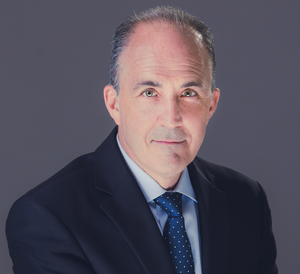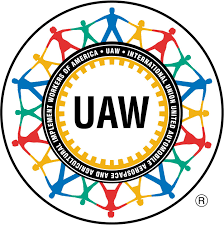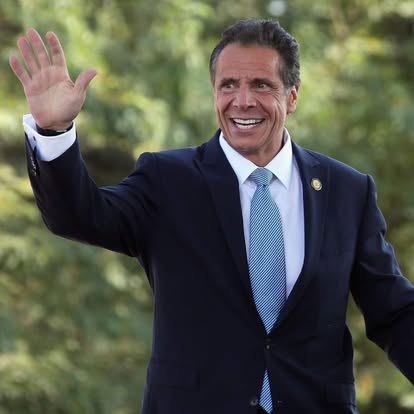New York, NY – Straphangers continue to be a little bit wary about resuming their regular commutes following April 12’s shooting in Sunset Park, Brooklyn, in which the alleged assailant was later charged in federal court with committing a terrorist attack on the city’s mass transit system.
Many posted on social media immediately after the attack asking their friends and family if they were riding the subway. Others looked for guidance on how to protect their own safety. But for those who work in mass transit, avoiding buses and trains each day is not an option. LaborPress recently spoke to two of them. Donald Yates is TWU Local 100 Division Chairman, representing bus operators in Manhattan. David Gaskin is a train operator. Yates has been with the city’s mass transit system for twenty-eight years. Gaskin has been on the job for seven.
Gaskin describes his state of mind after the shooting as “tense.” But, then again, he also says it’s been like that ever since the start of the pandemic. “Especially with the homeless problem that we’ve had for the last two years,” he says. “It’s just an escalation of a situation that’s already been present for the last two years.”
Nevertheless, when asked if the Sunset Park shooting is always in the back of his mind, the MTA veteran says yes. “Because it’s something that’s thrown out of proportion. There’s been shootings on the subway [before]. This is just an escalation of that. There are shootings on the subway, I assume they don’t get as widely reported as this one. But there are shootings.”
Gaskin’s family worries every time he leaves for work. “My family, they have concerns over it. But, you know, there’s no guarantees for anyone’s safety at any point in time, especially in New York City.”
Yates says the shooting is impacting the workers he represents in a myriad of ways. “It affects the bus operators because whatever comes out of the subways comes onto the buses,” he says. “We were just having what we call a shop gate — that’s sort of a meeting that the union rep gives, in my case, to the bus operators. We were just discussing the incident that happened in Brooklyn. Sometimes, we just do our job and it’s so routine that maybe we are not normally looking out for the person who looks suspicious, especially during this pandemic. [City officials] did a cleanup of the subway system. And in cleaning up the subway system, a lot of the homeless folks that were down there had to come out of the system. And a lot of them are still not returned to the system. A lot of them are still out there in the streets and entering buses. That’s just one part of it. In the case of the gentleman who did the shooting, he had the look of a construction worker, like he was going to work. The first reports that we got on it, was the fact that it was an MTA vest [he was wearing]. But those reports ended up being false.”
To some extent, both Yates and Gaskin agree that New York City’s worsening homeless crisis is endangering transit workers. Gaskin, however, says the physical threats transit workers face daily come from a “mix” of people. Sometimes, he says, those committing violent crimes against transit workers might simply be trying to “take out their frustrations about the transit system on those who run it.”
“I know plenty of people who have been assaulted,” Gaskin says. “Many of my colleagues who have been assaulted, spit on, punched, slapped, verbally abused on a daily basis. We’re basically the face of an organization — all we do is what they tell us to do. We follow orders, but people only see us and that’s the main crux of the issue. People think that we’re the ones causing the delays or any of the issues, and they take their frustrations out on the people that they see. It’s not just the homeless. It’s the people with mental issues.”
Frank James, the man charged in the April 12, subway shooting in Brooklyn, loudly declared his struggles with mental issues on social media prior to the attack.
What can be done to make transit workers safer?
“I guess the issue that’s pretty much affecting all of the riders in New York, which is the homeless situation, the mental outreach focus, you have a lot of people who can be a danger to themselves and to other people,” Gaskin says. “Pretty much, it boils down to that. The homeless situation in the city has gotten worse. They don’t have the facilities. I guess they don’t have the money to properly deal with the people who need this help.”
Of Mayor Eric Adams’ effectiveness in dealing with this issue, Gaskin says, “I think it’s too early to tell. He’s saying that he wants to do changes, and I’ll give him the benefit of the doubt that he’s gonna do it, seeing as he used to be a cop. So, I’m sure he understands what the situation is — but I would say it’s too early to tell whether or not he’s going to do any meaningful change yet.”
Yates says he and his workers want to see more of a police presence along city bus routes. “A complaint recently came up about the fact that, let’s say in Manhattan, the police are checking the buses…but they’re only checking them or riding them up to 57th Street where nothing really happens. [It’s] when they get uptown into the upper Manhattan areas where a lot of the action is starting to happen. One of the [bus] operator’s complaints is there’s drug trafficking right in the bus, right into the bus stop. Sometimes, the bus operator is scared to open the door in that bus stop because they don’t know what’s coming on their bus. And they asked that I get in contact with somebody to see if we can get police over there. And then in fairness, the operator did say sometimes the police just come on their own and just clear the area. But that’s not very often.”
Might it be a good idea to train transit workers for future mass shootings? “Well, that’s an open ended question,” Yates says. What would we learn? Self-defense? Conflict avoidance? That would be the question. I’m not sure how to really answer that. In most cases when it comes to the MTA, they give a course for us to take maybe for the day. And maybe it’s conflict avoidance and things like that. It’s usually something we have to sign off on, see a video, maybe a film. They have an instructor speak to you about it. And that’s really maybe an hour or so. Sometimes a day. And that’s it. A lot of times, those things are there to cover the MTA in the event something does happen out there.”
Gaskin is more pointed in his answer. “I think anyone who works in and around the city should have that kind of training. We deal with the public on a daily basis. Just as much as the cops. In the city, we transit workers probably interact with more people on a daily basis. Because millions of people take the subway on a daily basis, we see and interact with people every day. I’d say just as much if not more than the cops do. So, I would never say no to anyone or anything like that, if they offered it because it just would help us do our job better. If we knew how to understand those types of situations.”





